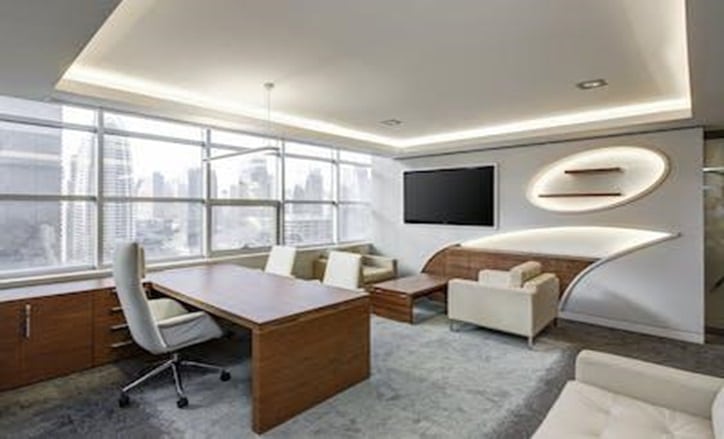Introduction
Over the years, the office has experienced a remarkable change from a place of dull cubicles and bare walls. Offices have changed from the conventional layout that stifled creativity and hindered cooperation into dynamic, contemporary workspaces that liven up the working environment. A focus on the human element in the workplace, innovative ideas, and game-changing concepts all characterize the thrilling transition from traditional to modern office design by office interior designers.
The Mundane Nature of Traditional Office Design
Office design was once associated with drab cubicles, rows of desks, and fluorescent lighting that seemed to drain the vitality out of the workplace. Despite being effective in and of itself, the traditional office design lacked the style and energy that characterize contemporary workplaces. Traditional office design had certain important elements like the following:
Secluded Cubicles: The phrase “Cubicle Farms” effectively encapsulated the old-fashioned workplace, where workers were cooped up in their tiny cubicles, which contributed to a feeling of loneliness.
Limited Natural Light: Traditional offices frequently relied largely on artificial lighting, which left workers feeling uninspired and cut off from the outside world.
Layout reflecting a rigorous hierarchy: Executives typically had corner offices, and there was a distinct line separating management from employees in traditional office layouts.
Conventional Furniture: The office was filled with generic desks and chairs that offered little room for customization or comfort.
The Revolution of the Modern Workplace
The revolution in office design was brought on by the insight that a more stimulating and enjoyable working positively influences both creativity and productivity. Liberating oneself from convention and embracing innovation was the central theme of the modern workspace journey. Key components as characterized by new-age office interior designers are:
Open Floor designs: With the decline of cubicle farms came the emergence of open floor designs, which encourage teamwork, communication, and a feeling of community among workers.
Biophilic Design: Contemporary workplaces incorporate natural elements like plants, green walls, and lots of natural light to create a fresher, healthier environment.
Flexibility and mobility: Fixed, rigid furniture was replaced with flexible, modular configurations that allowed workers to personalize their workstations according to their tastes and tasks.
Breakout Spaces: Contemporary workplaces have game rooms, lounges, and breakout spaces that give workers a place to relax, collaborate, and refuel.
Finding the Perfect Balance with Hybrid Workspaces
Office layouts have recently changed as a result of the recent shift toward remote work, giving rise to hybrid workspaces that can house both local and remote workers. A hybrid workspace’s essential components are as follows:
Agile Workstations: Offices adopted adjustable workstations that catered to both in-person and virtual collaboration, outfitting them with the required tools and amenities.
Rules that are remote-friendly have been implemented by businesses, allowing staff members the option to work from home or the office as necessary. These rules acknowledge the need for remote work.
Technology Integration: For on-site and remote workers to collaborate and communicate effectively in hybrid workspaces, seamless technology integration has become essential.
Employee wellness: Hybrid workspaces with a wellness focus offer resources and assistance for preserving work-life balance even in distant situations.
Accepting the Future: The Current Evolution
Office design is continuously changing, evolving to meet the demands of the workforce as well as new technologies and fashion trends. Office design will advance as employers work to develop spaces that foster creativity, promote cooperation, and put a priority on employee well-being. The transformation of old workstations into modern ones is evidence of the force of innovation and the understanding that a company’s physical workspace has a substantial impact on its performance.
Conclusion
The transition from conventional to modern office designs, in conclusion, represents the shifting dynamics of the modern worker. The transition from dreary cubicles to lively, open spaces represents a change in perspective toward employee well-being, collaboration, and innovation. The development of office design continues to be an interesting and dynamic adventure as we accept hybrid work styles and incorporate cutting-edge technologies. Companies may build a healthy, creative, and forward-looking work culture by designing workspaces that motivate and empower people.
FAQs Regarding Contemporary Office Design
How does biophilic design improve contemporary workplaces? What is it?
Biophilic design brings aspects of nature into the workplace, such as plants, natural lighting, and organic materials. It boosts productivity and creativity while promoting worker wellbeing and lowering stress levels.
Why are open floor plans so common in modern offices?
An atmosphere of friendliness and teamwork is fostered through open floor patterns for the workplace. Physical obstacles are removed, and a more welcoming and lively workplace is encouraged.
How can outdated offices successfully make the switch to contemporary work spaces?
Companies should concentrate on including components like adaptable furniture, breakout spaces, and biophilic design to make the shift from conventional to modern workspaces. In order to facilitate remote work, they should also embrace technology.
What are the advantages of a hybrid workspace model?
Businesses may provide employees more freedom with a hybrid workspace model, which improves work-life balance, boosts job satisfaction, and gives them access to a larger talent pool.

